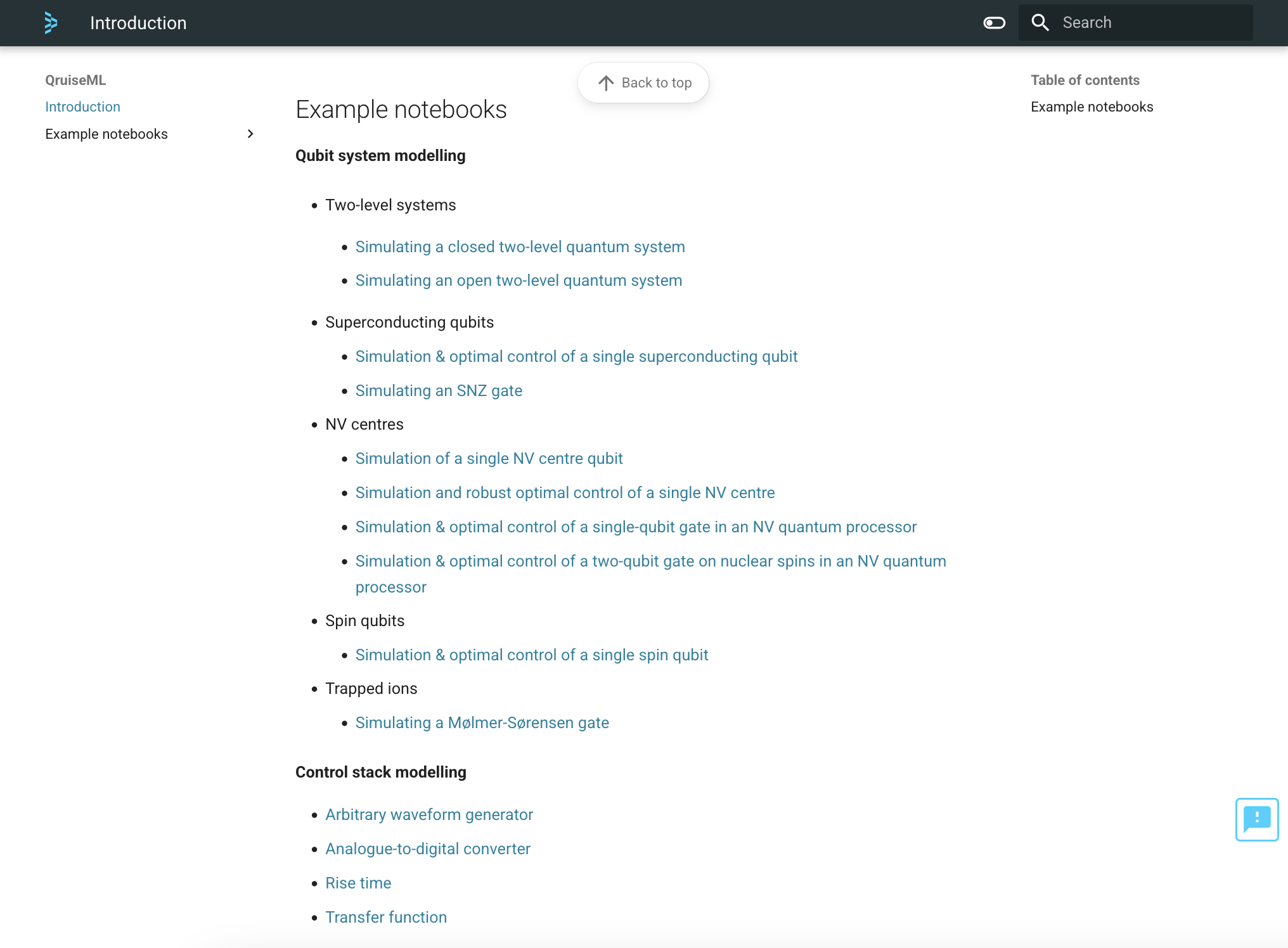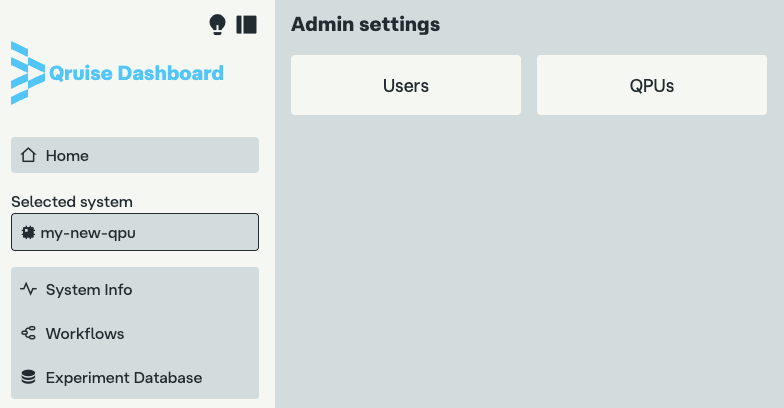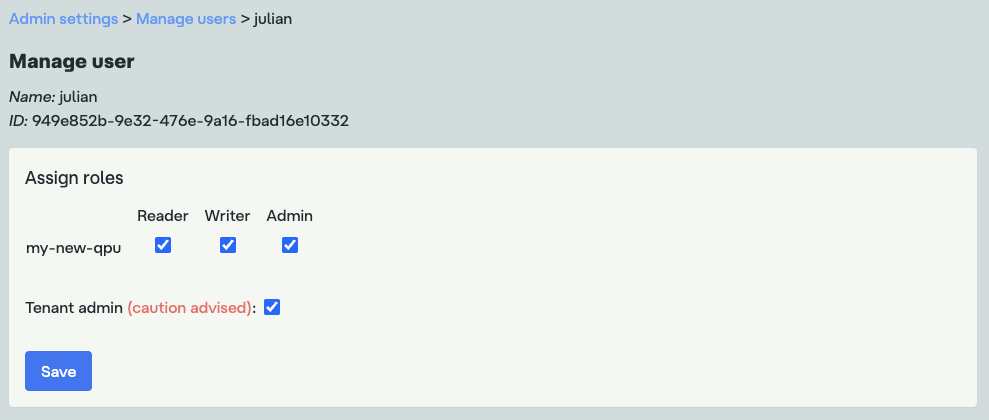2025 Autumn product update
22. October 2025
It’s spooky season and it's time for our autumn product update. These last few months have been jam-packed with new features, bug fixes and documentation improvements. If you haven't been following, you should definitely take a look at the detailed release notes for a full deep-dive into all the new updates. Here, we summarise and highlight the key developments.
Contents:
QruiseML
Expanded set of examples
We now have a very comprehensive set of examples covering everything from generic two-level systems to superconducting qubits, trapped ions, spin qubits, and nitrogen vacancy centres in diamond. We now also have detailed tutorials guiding you through the process of creating a complete digital twin of your quantum control stack.

New Slepian pulse and equation solver
We now have built-in support for the modelling and optimisation of gates based on the widely used Slepian pulse, which provides a spectrally clean pulse of short duration. It's particularly useful for designing CZ or iSWAP gates in tunable superconducting systems. We have also added support to compile an equation for solving a piecewise-constant Lindblad master equation. The lindbladpwc() function accepts a list of collapse operators as QuTiP objects or JAX arrays.
QruiseOS
We had two main focus areas for QruiseOS during the last quarter: documentation and unified access control. Both of these are meant to significantly enhance the onboarding experience of new users trying out QruiseOS for the first time.
Documentation overhaul
We added five new sections to the QruiseOS documentation to help users at every step of their journey as they get familiarised with the software:
- Initial setup: Primarily intended for system administrators, this section outlines everything you need to do to bootstrap a new installation of QruiseOS.
- Getting started: The entry point for all non-admin users of QruiseOS, this section covers things like setting up access tokens, running measurements, and navigating the dashboard and knowledge base.
- User guides: This section provides step-by-step tutorials for common use-cases such as executing workflows and managing data, and is designed to be read alongside the corresponding example notebooks in the QruiseOS JupyterLab.
- Knowledge base: Characterisation data is stored in a structured format within the QruiseOS knowledge base. This section outlines the different ways you can customise the knowledge base to fit your specific needs.
- Flows: These pages provide a comprehensive reference to the syntax used by the Qruise flow files and how you can design your own bring-up recipes based on the requirements of your quantum computing stack
Unified access control

Providing granular access control in multi-QPU, multi-user environments is one of the key features of QruiseOS. We have fully revamped this feature to provide a unified interface for managing all your QPUs, users, and the specific level of access that each user has for each QPU. We've added granular permissions (read / write / admin), so admins can control who can view, schedule, and run jobs on each QPU.

There is also a single unified identity file for easy environment configuration. It automatically handles authentication, tenant selection, API connection, and QPU permissions. You can learn how to do this step by step in our new Configuring the environment getting started guide.
qruise@quantumofsolace:~$ cat ~/.config/qruise/credentials/default.id
key: qruise_os_a6997b25f0994c4f9ea57ba67e277554_...
url: http://qruise-backend:8000/
The JupyterLab environment provided for QruiseOS users now supports single sign-on (SSO). This means that when you log in to Jupyter, you’ll get the exact same permissions for QPUs and workflows that you would get on the dashboard. You also no longer need to set an API token in Jupyter to run experiment notebooks. This SSO feature is still in beta, so expect more documentation on this in the upcoming releases.
Quality of life improvements
There were also several minor usability improvements. You can now easily add QPUs from the command line with a simple qruise qpu add. You can also set a concurrency limit in qruise flow to set the maximum number of tasks that can run concurrently during a workflow. The default version of Python in our stack has been upgraded to 3.12 and we now have reproducible builds for all our releases using Pixi.
Additionally, we've added the QruiseOS version to the dashboard (at the bottom left), so users can check which version they're using when they need to locate the corresponding docs or file a support ticket. To streamline user feedback, we've added a button to our docs site, so you can let us know if something's missing or not quite right. We encourage you to use this as much as needed — your feedback helps us improve the software for everyone!
Reach out today to request access if you'd like to try out all these new features in QruiseOS and QruiseML!
Stay Informed with Our Newsletter
Subscribe to our newsletter to get the latest updates on our products and services.